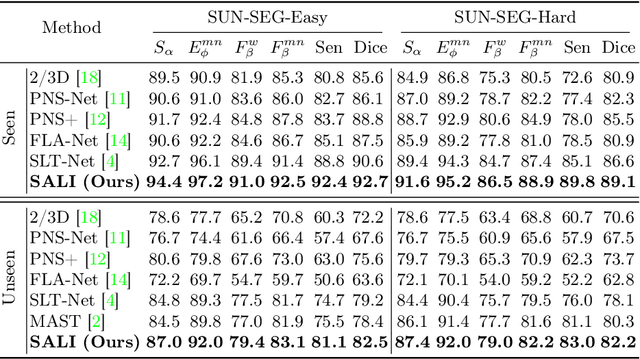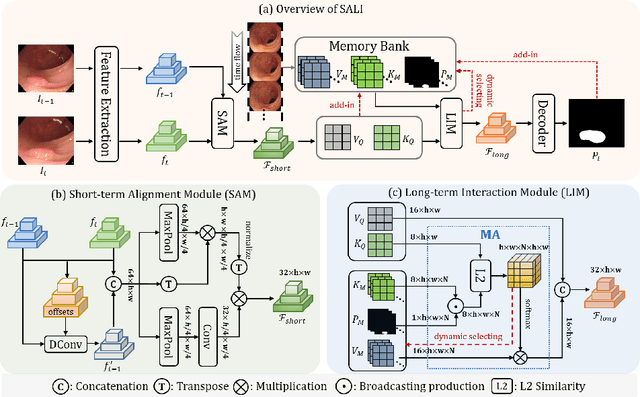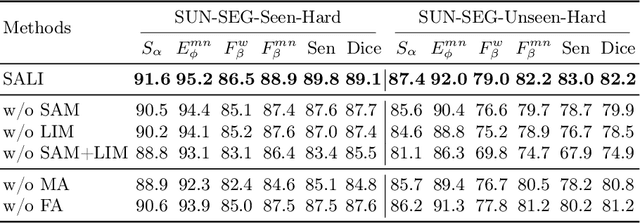Ying Zhou
DiffLM: Controllable Synthetic Data Generation via Diffusion Language Models
Nov 05, 2024



Abstract:Recent advancements in large language models (LLMs) have significantly enhanced their knowledge and generative capabilities, leading to a surge of interest in leveraging LLMs for high-quality data synthesis. However, synthetic data generation via prompting LLMs remains challenging due to LLMs' limited understanding of target data distributions and the complexity of prompt engineering, especially for structured formatted data. To address these issues, we introduce DiffLM, a controllable data synthesis framework based on variational autoencoder (VAE), which further (1) leverages diffusion models to reserve more information of original distribution and format structure in the learned latent distribution and (2) decouples the learning of target distribution knowledge from the LLM's generative objectives via a plug-and-play latent feature injection module. As we observed significant discrepancies between the VAE's latent representations and the real data distribution, the latent diffusion module is introduced into our framework to learn a fully expressive latent distribution. Evaluations on seven real-world datasets with structured formatted data (i.e., Tabular, Code and Tool data) demonstrate that DiffLM generates high-quality data, with performance on downstream tasks surpassing that of real data by 2-7 percent in certain cases. The data and code will be publicly available upon completion of internal review.
AIPO: Improving Training Objective for Iterative Preference Optimization
Sep 13, 2024



Abstract:Preference Optimization (PO), is gaining popularity as an alternative choice of Proximal Policy Optimization (PPO) for aligning Large Language Models (LLMs). Recent research on aligning LLMs iteratively with synthetic or partially synthetic data shows promising results in scaling up PO training for both academic settings and proprietary trained models such as Llama3. Despite its success, our study shows that the length exploitation issue present in PO is even more severe in Iterative Preference Optimization (IPO) due to the iterative nature of the process. In this work, we study iterative preference optimization with synthetic data. We share the findings and analysis along the way of building the iterative preference optimization pipeline. More specifically, we discuss the length exploitation issue during iterative preference optimization and propose our training objective for iterative preference optimization, namely Agreement-aware Iterative Preference Optimization (AIPO). To demonstrate the effectiveness of our method, we conduct comprehensive experiments and achieve state-of-the-art performance on MT-Bench, AlpacaEval 2.0, and Arena-Hard. Our implementation and model checkpoints will be made available at https://github.com/bytedance/AIPO.
SALI: Short-term Alignment and Long-term Interaction Network for Colonoscopy Video Polyp Segmentation
Jun 19, 2024



Abstract:Colonoscopy videos provide richer information in polyp segmentation for rectal cancer diagnosis. However, the endoscope's fast moving and close-up observing make the current methods suffer from large spatial incoherence and continuous low-quality frames, and thus yield limited segmentation accuracy. In this context, we focus on robust video polyp segmentation by enhancing the adjacent feature consistency and rebuilding the reliable polyp representation. To achieve this goal, we in this paper propose SALI network, a hybrid of Short-term Alignment Module (SAM) and Long-term Interaction Module (LIM). The SAM learns spatial-aligned features of adjacent frames via deformable convolution and further harmonizes them to capture more stable short-term polyp representation. In case of low-quality frames, the LIM stores the historical polyp representations as a long-term memory bank, and explores the retrospective relations to interactively rebuild more reliable polyp features for the current segmentation. Combing SAM and LIM, the SALI network of video segmentation shows a great robustness to the spatial variations and low-visual cues. Benchmark on the large-scale SUNSEG verifies the superiority of SALI over the current state-of-the-arts by improving Dice by 2.1%, 2.5%, 4.1% and 1.9%, for the four test sub-sets, respectively. Codes are at https://github.com/Scatteredrain/SALI.
Navigating the Shadows: Unveiling Effective Disturbances for Modern AI Content Detectors
Jun 13, 2024Abstract:With the launch of ChatGPT, large language models (LLMs) have attracted global attention. In the realm of article writing, LLMs have witnessed extensive utilization, giving rise to concerns related to intellectual property protection, personal privacy, and academic integrity. In response, AI-text detection has emerged to distinguish between human and machine-generated content. However, recent research indicates that these detection systems often lack robustness and struggle to effectively differentiate perturbed texts. Currently, there is a lack of systematic evaluations regarding detection performance in real-world applications, and a comprehensive examination of perturbation techniques and detector robustness is also absent. To bridge this gap, our work simulates real-world scenarios in both informal and professional writing, exploring the out-of-the-box performance of current detectors. Additionally, we have constructed 12 black-box text perturbation methods to assess the robustness of current detection models across various perturbation granularities. Furthermore, through adversarial learning experiments, we investigate the impact of perturbation data augmentation on the robustness of AI-text detectors. We have released our code and data at https://github.com/zhouying20/ai-text-detector-evaluation.
MonoPCC: Photometric-invariant Cycle Constraint for Monocular Depth Estimation of Endoscopic Images
Apr 25, 2024Abstract:Photometric constraint is indispensable for self-supervised monocular depth estimation. It involves warping a source image onto a target view using estimated depth&pose, and then minimizing the difference between the warped and target images. However, the endoscopic built-in light causes significant brightness fluctuations, and thus makes the photometric constraint unreliable. Previous efforts only mitigate this relying on extra models to calibrate image brightness. In this paper, we propose MonoPCC to address the brightness inconsistency radically by reshaping the photometric constraint into a cycle form. Instead of only warping the source image, MonoPCC constructs a closed loop consisting of two opposite forward-backward warping paths: from target to source and then back to target. Thus, the target image finally receives an image cycle-warped from itself, which naturally makes the constraint invariant to brightness changes. Moreover, MonoPCC transplants the source image's phase-frequency into the intermediate warped image to avoid structure lost, and also stabilizes the training via an exponential moving average (EMA) strategy to avoid frequent changes in the forward warping. The comprehensive and extensive experimental results on three datasets demonstrate that our proposed MonoPCC shows a great robustness to the brightness inconsistency, and exceeds other state-of-the-arts by reducing the absolute relative error by at least 7.27%.
MonoBox: Tightness-free Box-supervised Polyp Segmentation using Monotonicity Constraint
Apr 02, 2024



Abstract:We propose MonoBox, an innovative box-supervised segmentation method constrained by monotonicity to liberate its training from the user-unfriendly box-tightness assumption. In contrast to conventional box-supervised segmentation, where the box edges must precisely touch the target boundaries, MonoBox leverages imprecisely-annotated boxes to achieve robust pixel-wise segmentation. The 'linchpin' is that, within the noisy zones around box edges, MonoBox discards the traditional misguiding multiple-instance learning loss, and instead optimizes a carefully-designed objective, termed monotonicity constraint. Along directions transitioning from the foreground to background, this new constraint steers responses to adhere to a trend of monotonically decreasing values. Consequently, the originally unreliable learning within the noisy zones is transformed into a correct and effective monotonicity optimization. Moreover, an adaptive label correction is introduced, enabling MonoBox to enhance the tightness of box annotations using predicted masks from the previous epoch and dynamically shrink the noisy zones as training progresses. We verify MonoBox in the box-supervised segmentation task of polyps, where satisfying box-tightness is challenging due to the vague boundaries between the polyp and normal tissues. Experiments on both public synthetic and in-house real noisy datasets demonstrate that MonoBox exceeds other anti-noise state-of-the-arts by improving Dice by at least 5.5% and 3.3%, respectively. Codes are at https://github.com/Huster-Hq/MonoBox.
Humanizing Machine-Generated Content: Evading AI-Text Detection through Adversarial Attack
Apr 02, 2024Abstract:With the development of large language models (LLMs), detecting whether text is generated by a machine becomes increasingly challenging in the face of malicious use cases like the spread of false information, protection of intellectual property, and prevention of academic plagiarism. While well-trained text detectors have demonstrated promising performance on unseen test data, recent research suggests that these detectors have vulnerabilities when dealing with adversarial attacks such as paraphrasing. In this paper, we propose a framework for a broader class of adversarial attacks, designed to perform minor perturbations in machine-generated content to evade detection. We consider two attack settings: white-box and black-box, and employ adversarial learning in dynamic scenarios to assess the potential enhancement of the current detection model's robustness against such attacks. The empirical results reveal that the current detection models can be compromised in as little as 10 seconds, leading to the misclassification of machine-generated text as human-written content. Furthermore, we explore the prospect of improving the model's robustness over iterative adversarial learning. Although some improvements in model robustness are observed, practical applications still face significant challenges. These findings shed light on the future development of AI-text detectors, emphasizing the need for more accurate and robust detection methods.
Hidding the Ghostwriters: An Adversarial Evaluation of AI-Generated Student Essay Detection
Feb 01, 2024Abstract:Large language models (LLMs) have exhibited remarkable capabilities in text generation tasks. However, the utilization of these models carries inherent risks, including but not limited to plagiarism, the dissemination of fake news, and issues in educational exercises. Although several detectors have been proposed to address these concerns, their effectiveness against adversarial perturbations, specifically in the context of student essay writing, remains largely unexplored. This paper aims to bridge this gap by constructing AIG-ASAP, an AI-generated student essay dataset, employing a range of text perturbation methods that are expected to generate high-quality essays while evading detection. Through empirical experiments, we assess the performance of current AIGC detectors on the AIG-ASAP dataset. The results reveal that the existing detectors can be easily circumvented using straightforward automatic adversarial attacks. Specifically, we explore word substitution and sentence substitution perturbation methods that effectively evade detection while maintaining the quality of the generated essays. This highlights the urgent need for more accurate and robust methods to detect AI-generated student essays in the education domain.
Triple Disentangled Representation Learning for Multimodal Affective Analysis
Jan 29, 2024Abstract:Multimodal learning has exhibited a significant advantage in affective analysis tasks owing to the comprehensive information of various modalities, particularly the complementary information. Thus, many emerging studies focus on disentangling the modality-invariant and modality-specific representations from input data and then fusing them for prediction. However, our study shows that modality-specific representations may contain information that is irrelevant or conflicting with the tasks, which downgrades the effectiveness of learned multimodal representations. We revisit the disentanglement issue, and propose a novel triple disentanglement approach, TriDiRA, which disentangles the modality-invariant, effective modality-specific and ineffective modality-specific representations from input data. By fusing only the modality-invariant and effective modality-specific representations, TriDiRA can significantly alleviate the impact of irrelevant and conflicting information across modalities during model training. Extensive experiments conducted on four benchmark datasets demonstrate the effectiveness and generalization of our triple disentanglement, which outperforms SOTA methods.
Sensing-assisted Accurate and Fast Beam Management for Cellular-connected mmWave UAV Network
Oct 12, 2023Abstract:Beam management, including initial access (IA) and beam tracking, is essential to the millimeter-wave Unmanned Aerial Vehicle (UAV) network. However, conventional communication-only and feedback-based schemes suffer a high delay and low accuracy of beam alignment since they only enable the receiver to passively hear the information of the transmitter from the radio domain. This paper presents a novel sensing-assisted beam management approach, the first solution that fully utilizes the information from the visual domain to improve communication performance. We employ both integrated sensing and communication and computer vision techniques and design an extended Kalman filtering method for beam tracking and prediction. Besides, we also propose a novel dual identity association solution to distinguish multiple UAVs in dynamic environments. Real-world experiments and numerical results show that the proposed solution outperforms the conventional methods in IA delay, association accuracy, tracking error, and communication performance.
 Add to Chrome
Add to Chrome Add to Firefox
Add to Firefox Add to Edge
Add to Edge